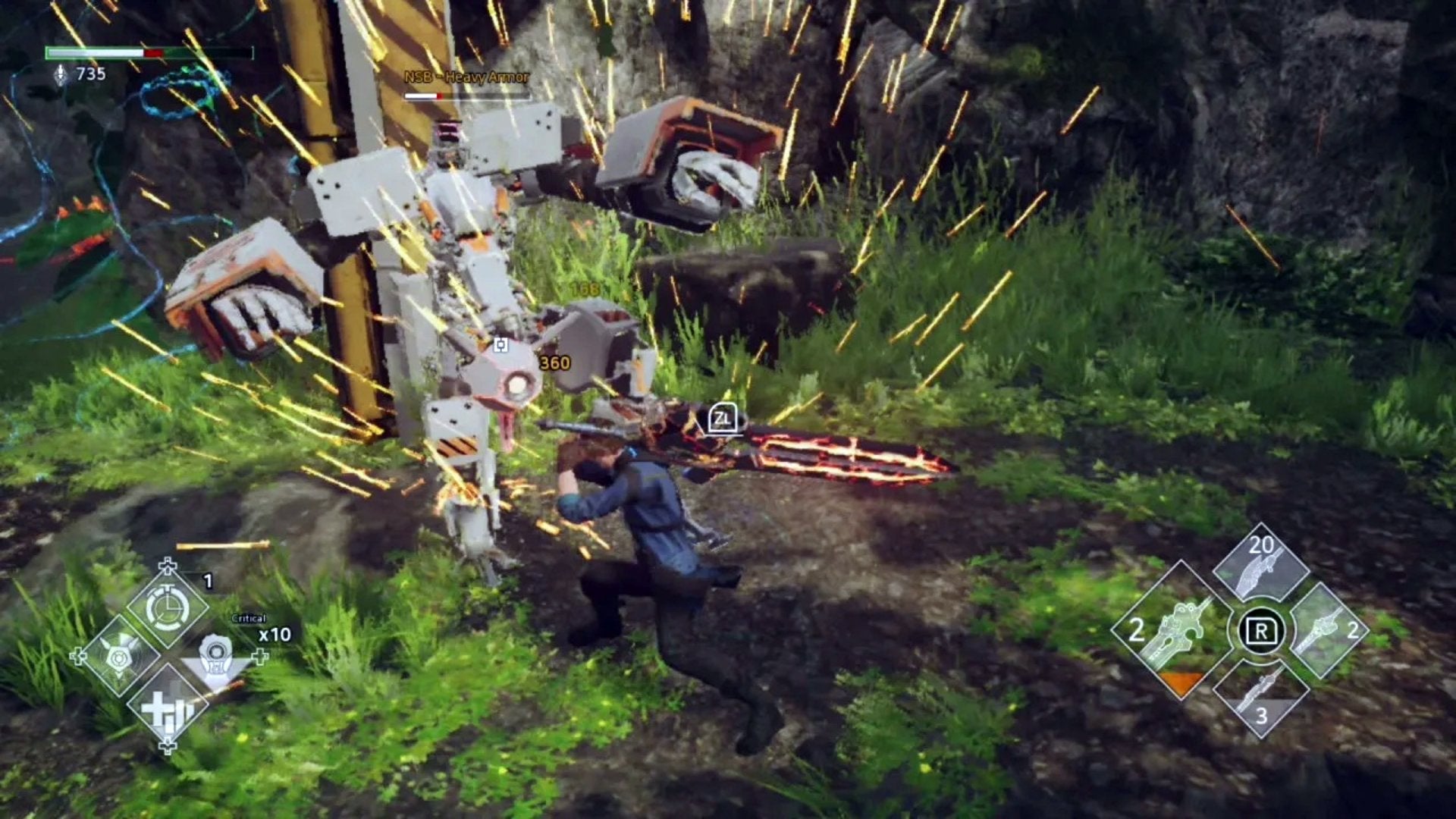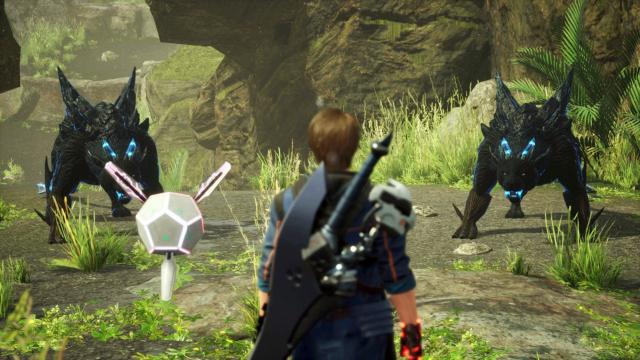Weapon durability in video games carries a semblance of realism, illustrating that nothing lasts forever no matter how well it’s built. Still, having my shiny new sword break in something like The Legend of Zelda: Breath of the Wild is some bullshit. It not only disrupts game flow when I’m pulling off a flashy combo, but also often leaves me open for a beating. There are only two outcomes in this situation: die or run. Which is why I was stoked when Ultra Age, a new DMC-style action game, dropped on the Nintendo Switch this September.
Ultra Age does ease weapon durability frustrations, instead turning the moment into a satisfying combo finisher that’s both punchy and stylish. And when it happens, it’s not a surprise: Ultra Age actually shows your durability on-screen, in the HUD, without interrupting whatever flow or momentum I’ve put in motion.
So, What Is Ultra Age Then?
Ultra Age isn’t a revolutionary game. You play as some standard JRPG hero named, wait for it…Age. This Squall wannabe “embarks on a mission to save humankind from extinction,” per the game’s description on its website. The result is a pretty solid, if mild, action game in the same vein as other genre classics like Bayonetta and Devil May Cry. There are light and heavy attacks (that can be pressed in succession for simple combos that look cool), a dodge. The usual. But what makes the game’s combat so thrilling is how it handles — or rather, integrates — weapon durability.
On the bottom right of the screen are four grey-filled, diamond-shaped icons, each representing one of the six available swords equipped: Charged Claymore, Claymore, Gunblade, Katana, Lightning Blade, and Steel Blade. As you attack enemies — crystalized animals, dusty robots, some birds — the grey in the icon starts to deplete, literally illustrating how long the sword will last until it breaks. You can swap between the four blades on the fly, which results in a fancy sword attack like a Rebellion-style uppercut, before it explodes in a cascade of light energy.

Or you can just let it break in the middle of a combo. What’s sick is neither occurrence interrupts the flow. There’s maybe a millisecond pause between attacks while Age draws another Claymore or Katana, but it’s negligible at best. And better yet, when Ultra Age’s UI indicates a sword is about to break, a button prompt appears, which initiates this glitzy, high-damage Break Blade attack. Guess what? Age just draws another weapon right after.
What’s This Got To Do With Breath Of The Wild?
Well, just compare this to Breath of the Wild. What Ultra Age presents is, essentially, a health bar for all four equipped swords. In Breath of the Wild, there’s a visual indicator, your weapon flashes, and you get a text notification saying it’s about to break. And once a weapon crumbles in Breath of the Wild, especially in the early parts of the game, Link just stands around empty-handed. Hero of Time? More like wasting time. Then you’ve got the unnecessary button combinations needed to equip another blade. It’s not convoluted, but it does disrupt the game’s flow.
That’s what makes weapon durability such a chore in games to me: the mechanic almost always interrupts you. Whether that’s requiring you to manage yet another resource (either repair kits or weapons themselves) or leaving you defenseless in a tense situation, worrying about the status of your equipment should be the last thing on your mind. I understand the philosophy behind weapon durability, of course. It’s meant to encourage serendipitous experimentation, as you can’t perpetually use that one weapon you love best. But more often than not, it just feels like a rote hindrance.
What Ultra Age does is, in short, make weapon durability cool. It’s omnipresent, by way of both the health bar and the button prompt, but there are ways to avoid breaking a blade in this four-person-developed indie game. You can lean all the way in and execute a Break Blade attack or just watch the sword erupt in blue light. However, no matter how a weapon breaks in Ultra Age, the mechanic never stops you in your tracks. And it’s refreshing to see this terrible design trope incorporated so seamlessly. I hope other games learn from developer Next Stage’s gameplay design.
Ultra Age is out now on the Nintendo Switch and PlayStation 4, with a PC release in the works.

Leave a Reply